We now nearly have a full set of project replicas! All the replica metal cymbals and bells have now been finished by Justin Richardson and we are ready for the next stage of research.
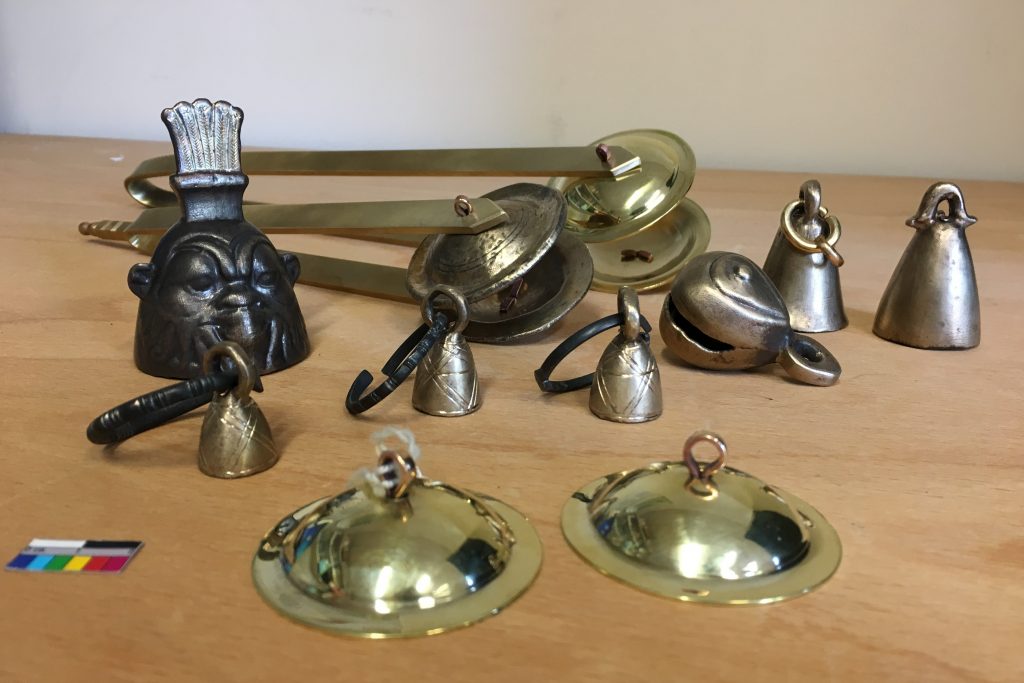
The metal replicas include 3 sets of cymbals, each pair finished in a different way to reflect the originals. Two pairs – the ones with the high shine finish – were created by shaping a flat disk of alloy over a mould, with the edges hammered slightly to mimic the caulked finish of the originals.
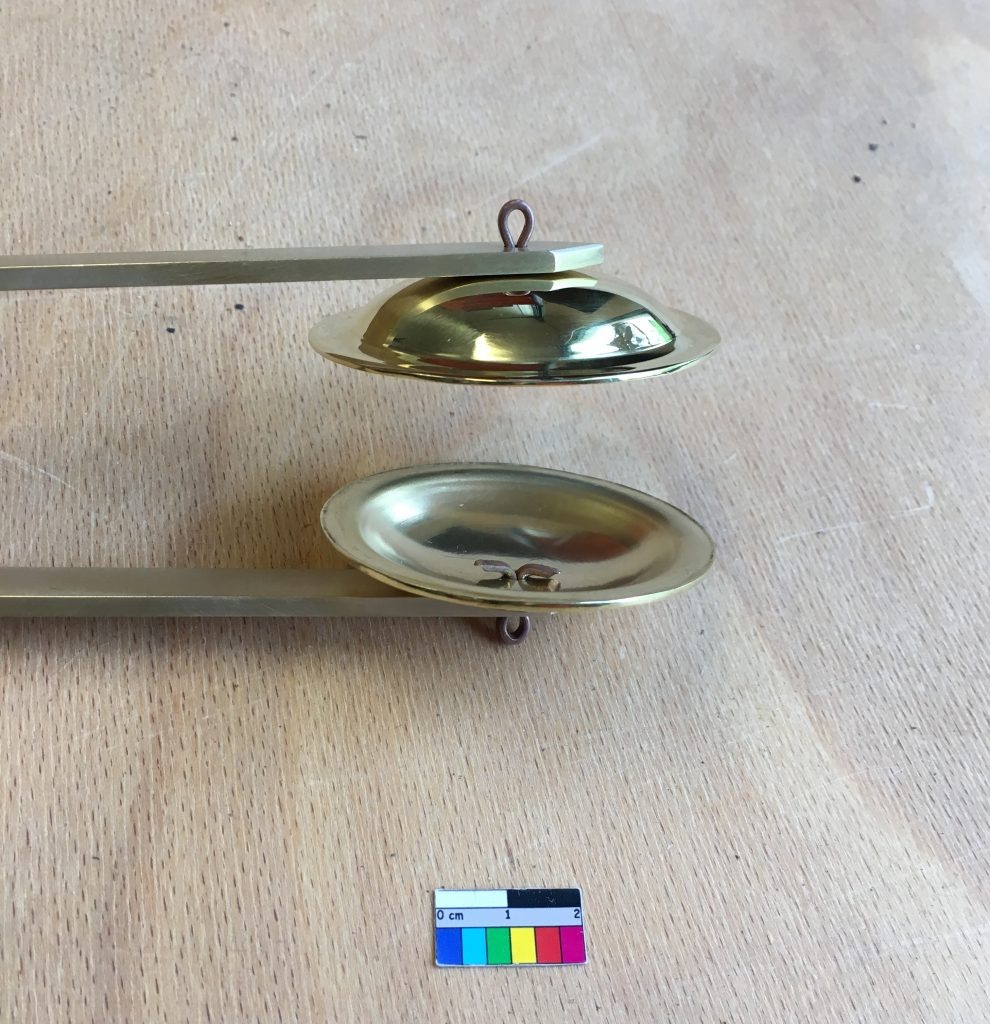
One pair has been attached to metal handles allowing the cymbals to be easily held and hit against each other, as seen in visual sources from the period. Another pair – these ones cast rather than hammered – are also attached to handles in the same manner, mimicking a specific example in the British Museum. Compared to the unattached pair, the handles allow a much louder sound to be created by banging the handles on the forearm of the player.

The range of bells with bracelets attached have been created to mimic not only the materials but also the size. The iron bracelets accurately reflect the diameters of the originals which would have been worn by small children; the bells themselves make delicate tinkling sounds.
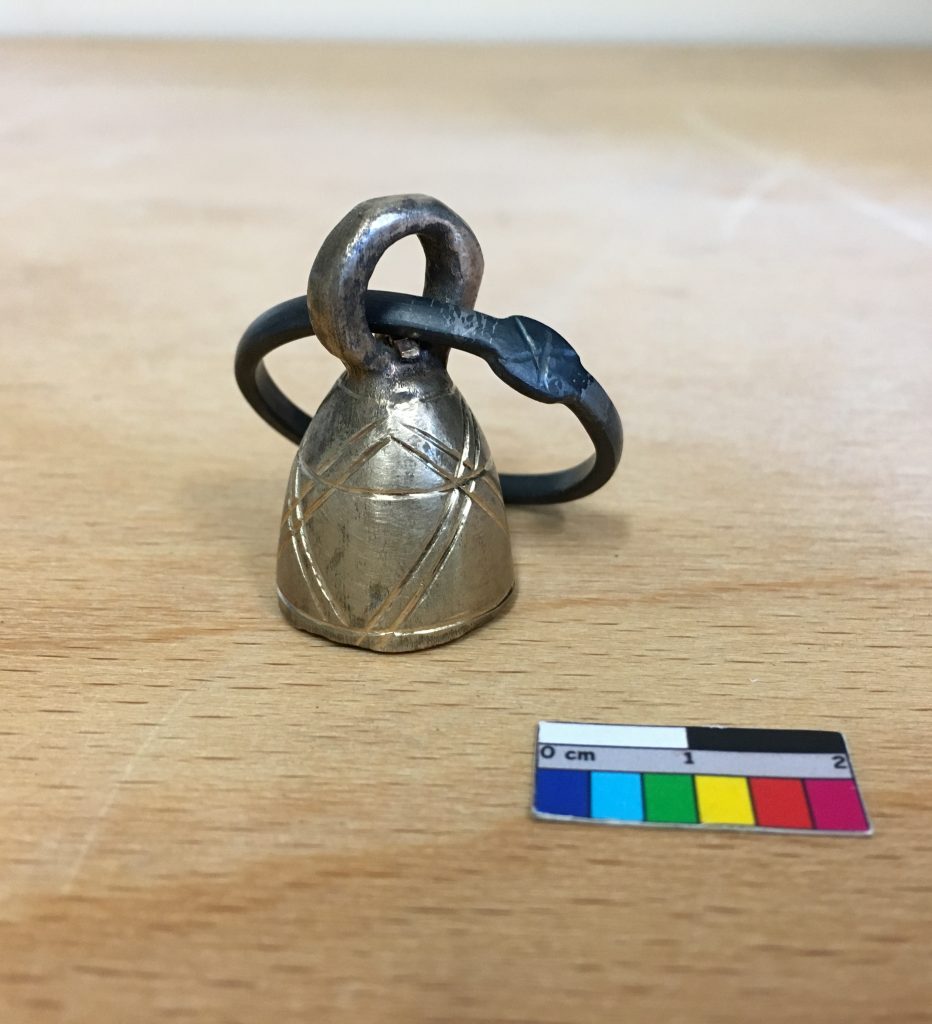
The Bes bell – one of our favourites – looks really impressive. Thanks to the laser scanning process, all the details have been preserved in the cast replica, including the thinned and worn ring at the back of the bell. This kind of wear pattern shows that the bell was originally rung side-to-side. Justin has also added some engraved detail to the headdress decoration which sparkles when it catches the light, and giving an insight into what the brand new original may have looked like.
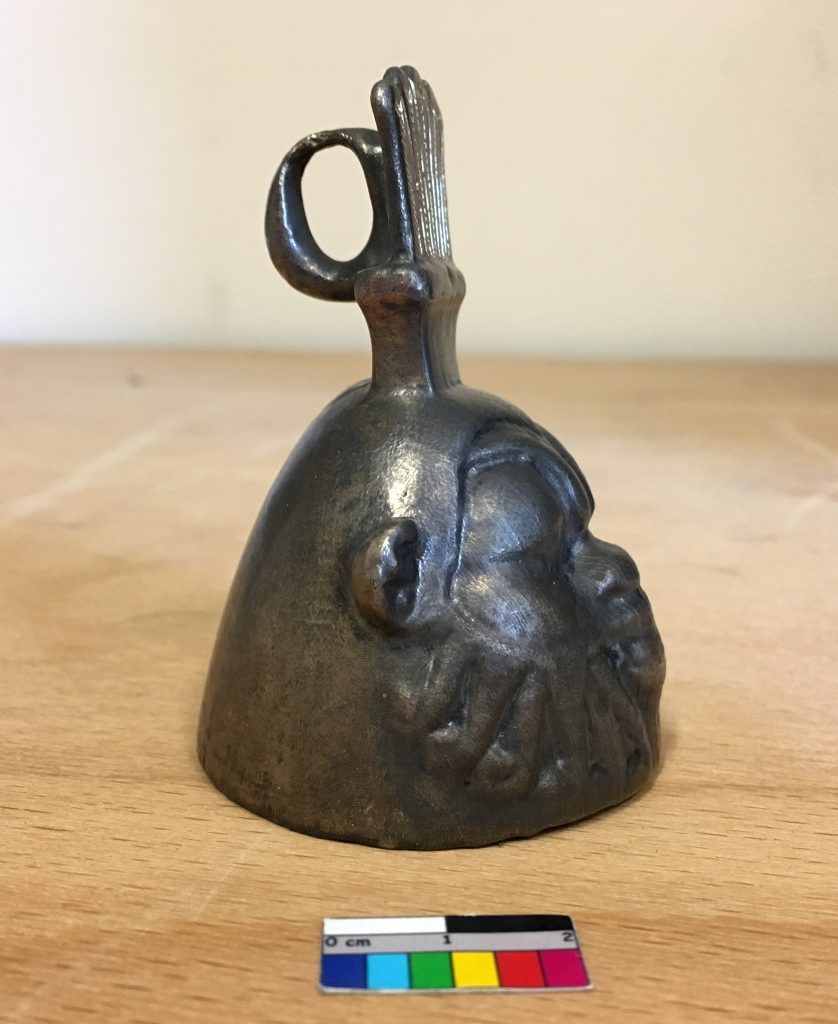
The bell with the gilded suspension ring has also been recreated. The series of loops attached to the top make it difficult to swing the bell to create any significant sound; instead it is most effective when holding onto the loop attached to the body of the bell itself. This kind of information will help us to interpret the original’s method of use and the range of sounds it likely made. The other similar bell (UC35794) makes a surprising and unpleasantly high pitch noise when rung.
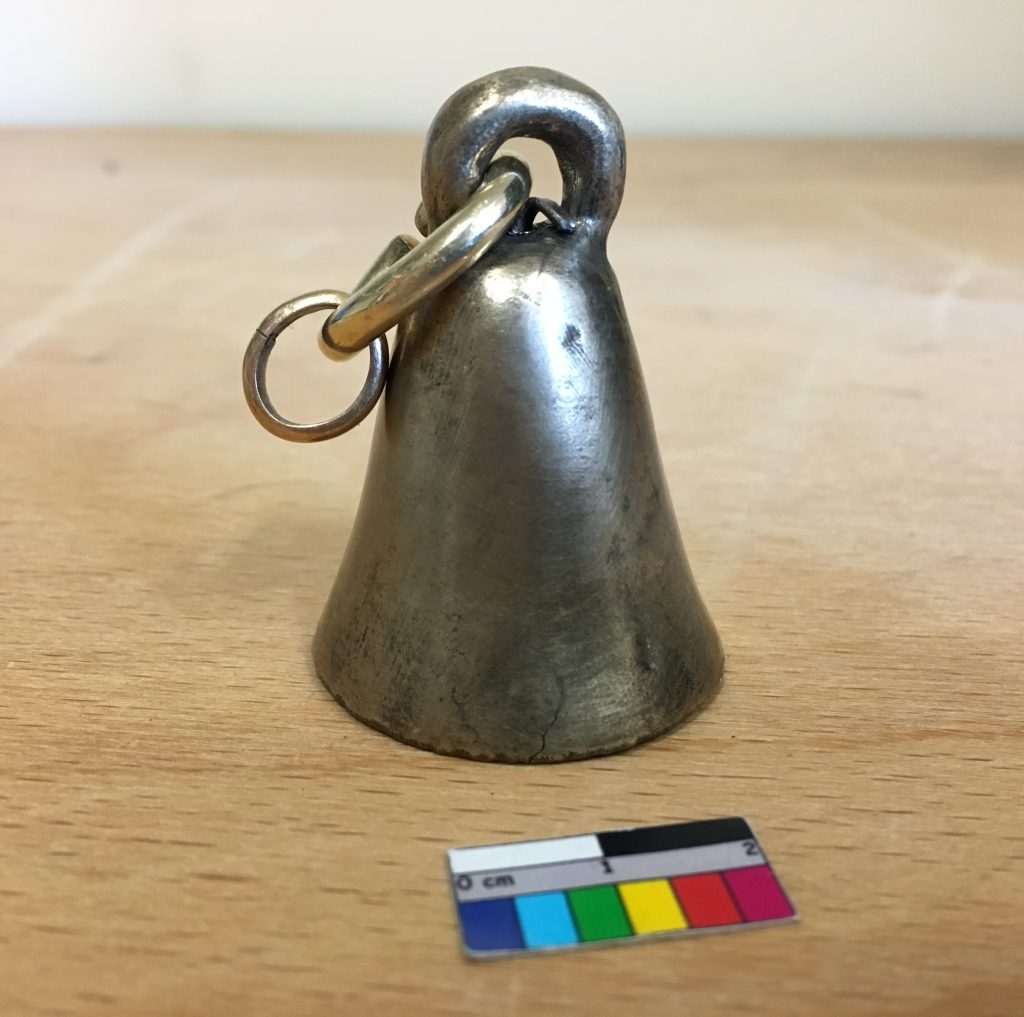
Not all of the bells had the clappers in place. Where possible we have recreated the originals exactly, using steel and copper alloy clappers to reflect those used on the extant originals, thus ensuring all the bells can now produce a sound. These metal replicas join the rest of our completed reconstructed instruments – the craft-made reed and 3D printed panpipes, pottery and 3D printed rattles, and the 3D printed clappers. We now have quite the selection! The final replica yet to be finished is a pair of clappers that are being carved using a wood router, using the data from the laser scan – this should arrive by the end of June.
Our next step is to record these replicas playing. We intend to use the sound recording studio at Kent’s School of Music and Fine Arts in Chatham to record the instruments playing in an interior space. The software available means we can specify the size of the room the instruments are played in along with the presence of soft furnishings, plastered surfaces, and different temperatures. We will also record the instruments playing in an outside open space, to mimic their use in a processional context.
These recording sessions are scheduled for later in the month – we will be recording our progress and will update the blog as soon as we have some preliminary results.
